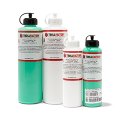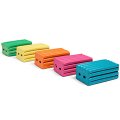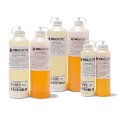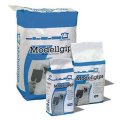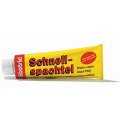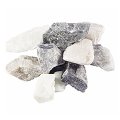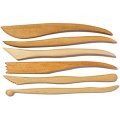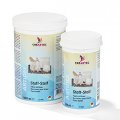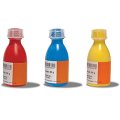Clay
Clay is the professional and flexible modelling clay for prototypes.
Popular and appreciated by industrial designers, character designers and architects alike, clays are among the standard materials among modelling pastes. During the design process of new automobiles, the creation of a full-size clay model is an indispensable step on the way to the finished product. The simple application of clay to the car body model, the flexible forming and ablation ensure modeling and post-modeling at the highest level. The material properties of the clay create the basis for high-precision yet simple machining - an invaluable advantage for large, smooth models and prototypes as well as for detailed architectural models and prostheses. The classic and initially unusual brown tone of the Clays is due to the fact that shapes and surface structures in this colour are best captured and assessed by the human eye.
The robust modelling clay that does not dry out
Clay is a modelling material or a wax-based clay which, together with fillers such as sulphur or sulphur-free substances (e.g. zinc stearates and magnesium) and brown or grey colour pigments, achieves its characteristic properties: clay does not dry out in the air and can be machined at room temperature (15 °C to 25 °C) and in contrast to normal plasticine.
When the material, also known as design clay, industrial clay or industrial plasticine, is heated in an oven at 50 °C to 65 °, the relatively hard material becomes supple and can be easily modelled on. This is particularly suitable for very large models whose costs and weight play a role that should not be underestimated. In such cases, the warm clay, which is easy to shape, can be easily applied to stable, lighter and cheaper bases made of rigid foam (e.g. polystyrene foam) or wood.
After the clay layer has cooled down and hardened, it can be shaped by scraping and scratching. Our modelling tools are ideal for this purpose and open up a wide range of precise material inspections in a practical set. In the industrial sector, computer-controlled milling machines are used here. The finished model is then scanned again and converted into CAD data. If it turns out that the proportions have to be improved at one point or another, warm clay can be attached to the model again. The best way to do this is to warm the model surface slightly with a heatgun.
The Finish - Polishing and colouring the clay
For the realistic and practical representation, finished clay models are often coated with special foils or lacquers. To prepare the models for this, the surface can be polished with a suitable blade or a cotton cloth. The paints and varnishes not only make it easier to imagine the final product. They also make intentional or unintentional reflections, light reflections and shading on the surface visible. If necessary, the foils and varnishes can be removed again to make desired changes to the model. Instead of special films and varnishes, we currently offer tinting paints as well as acrylic paints and acrylic-based paint sprays to give clay models the desired colour finish.
Effortless moulding of clay models
The surface-hard and edge-stable clay is not only used for the construction of clay models in model making and for the manufacture of prototypes in design and industry. Another field of application, which seamlessly follows the modelling process, is the creation of master models. Clay models can be moulded with plaster, condensation-curing silicones or polyester. As clay can be worked very finely and precisely, the results are also of high quality and true to shape.
